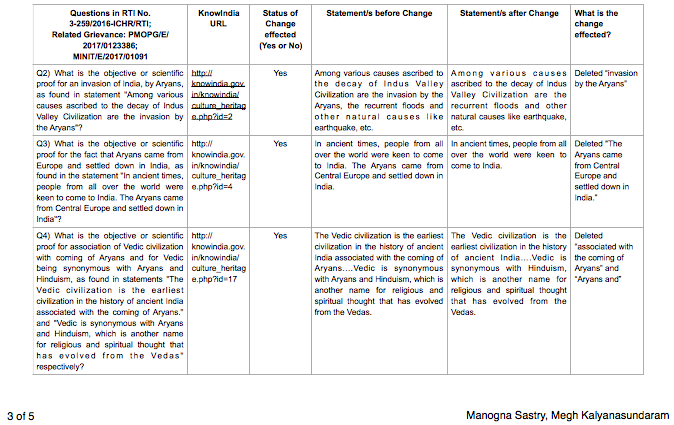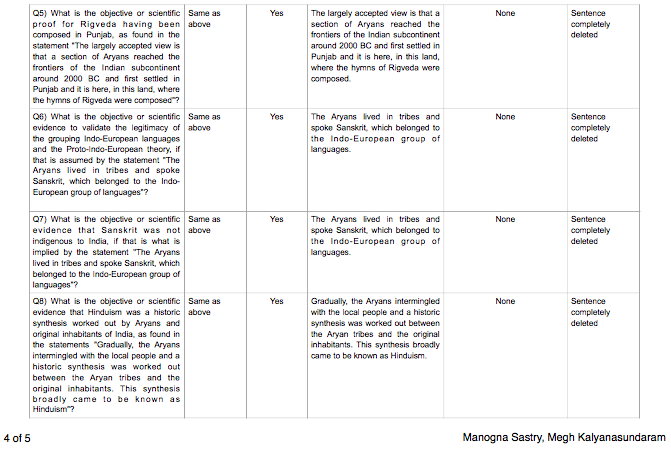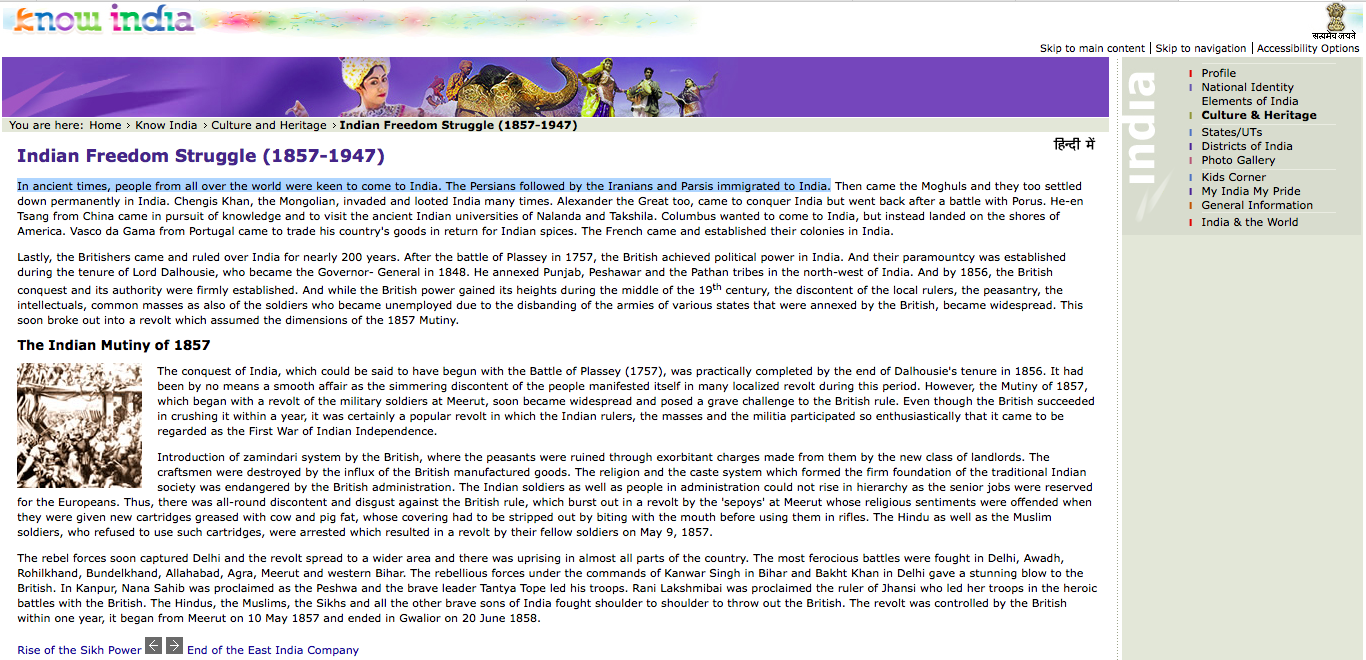Important Post by Rajiv Malhotra. Visit the egroup for full details, updates, and discussion.
LANDMARK RULING IN US FEDERAL COURT AGAINST HINDUPHOBIC CABAL: The ruling is available at: https://t.co/JFo6HcEuYK— Rajiv Malhotra (@RajivMessage) February 2, 2019
The background & my analysis is posted on my egroup at: https://t.co/iFFAuP8RRl
The above court ruling should be read after reading the following press release. My comments come after that press release.
FEDERAL COURT UNSEALS RECORDS OF CALIFORNIA DEPARTMENT OF EDUCATION'S RELIGIOUS BIAS SCHEME
FREMONT, CA
02 FEBRUARY 2019
Judge Charles Breyer has unsealed emails showing Department of Education officials soliciting and coordinating professors’ anti-Hindu reports on 2016 drafts of the California-History Social Science Framework that were falsely presented as “public comment.”
Tom Adams, the Deputy Superintendent at the California Department of Education, who has a history of working behind the scenes with professors who create anti-Hindu curriculum content, secretly contacted a group of professors with whom he had worked in the past. One of the professors, Jonathan Kenoyer of the University of Wisconsin, had co-authored a textbook the Curriculum Commission had rejected in 2005 for mocking Hinduism. Adams had then organized a group of professors who had not read this book to protest its rejection and used their protests to manipulate the State Board of Education into overruling the Commission’s decision to reject the textbook.
The scheme by Adams to avoid the process for retaining experts as contemplated by California Department of Education regulation and secretly recruit professors who could be relied upon to provide content derogatory of Hinduism during the Framework adoption process in 2016 was revealed through a subpoena on Kenoyer in the case of California Parents for the Equalization of Educational Materials (CAPEEM) v. Torlakson, No. 3:17-cv-00635, pending in the U.S. District Court for the Northern District of California. The emails among the professors show they understood they were to use “smoke and mirrors” to address the input of Hindu groups and one of the professors recognized that “readers of our report can imagine that [the report] is meant to undermine the legitimacy of Hinduism as a religion (and Hinduism uniquely among religions, at that).” One comment that shows the hostility of the professors accuses Hindus of appropriating the Vedas, Upanishads and the Gita and calling it the foundation of Hinduism.
The emails had been filed under seal until Thursday, when Judge Breyer agreed with the plaintiffs and ruled that neither the Regents of the University of California nor Professor Kenoyer had shown “compelling reasons” to keep the records under seal. “This is an important ruling that rejects the notion that government officials and professors can hide behind the label ‘academic freedom’ and allows all Californians to better understand how their government develops the public school curriculum,” noted Arvind Kumar, a board member of the Fremont-based CAPEEM. “Unfortunately, the emails reveal secrecy and doublespeak,” he added.
The court made clear that unsealed records may well be relevant to the claims brought by CAPEEM and Bay Area parents that the Framework is derogatory to Hinduism, since they argue that state officials coordinated with the professors to provide reports on the curriculum was falsely construed as public comment. “We knew that the content of the Framework treats Hinduism differently from other faiths but the emails show the bad faith by the officials who created that content,” said Glenn Katon, an Oakland civil rights lawyer representing CAPEEM and the parents. “This is another strong indication of the State’s violation of the Establishment Clause of the U.S. Constitution.”
The Court has yet to rule on motions filed by both sides arguing they are entitled to judgment as a matter of law. The order and unsealed documents and can be found here.
For media inquiries, contact media@... or (510) 463-3350.
02 FEBRUARY 2019
Judge Charles Breyer has unsealed emails showing Department of Education officials soliciting and coordinating professors’ anti-Hindu reports on 2016 drafts of the California-History Social Science Framework that were falsely presented as “public comment.”
Tom Adams, the Deputy Superintendent at the California Department of Education, who has a history of working behind the scenes with professors who create anti-Hindu curriculum content, secretly contacted a group of professors with whom he had worked in the past. One of the professors, Jonathan Kenoyer of the University of Wisconsin, had co-authored a textbook the Curriculum Commission had rejected in 2005 for mocking Hinduism. Adams had then organized a group of professors who had not read this book to protest its rejection and used their protests to manipulate the State Board of Education into overruling the Commission’s decision to reject the textbook.
The scheme by Adams to avoid the process for retaining experts as contemplated by California Department of Education regulation and secretly recruit professors who could be relied upon to provide content derogatory of Hinduism during the Framework adoption process in 2016 was revealed through a subpoena on Kenoyer in the case of California Parents for the Equalization of Educational Materials (CAPEEM) v. Torlakson, No. 3:17-cv-00635, pending in the U.S. District Court for the Northern District of California. The emails among the professors show they understood they were to use “smoke and mirrors” to address the input of Hindu groups and one of the professors recognized that “readers of our report can imagine that [the report] is meant to undermine the legitimacy of Hinduism as a religion (and Hinduism uniquely among religions, at that).” One comment that shows the hostility of the professors accuses Hindus of appropriating the Vedas, Upanishads and the Gita and calling it the foundation of Hinduism.
The emails had been filed under seal until Thursday, when Judge Breyer agreed with the plaintiffs and ruled that neither the Regents of the University of California nor Professor Kenoyer had shown “compelling reasons” to keep the records under seal. “This is an important ruling that rejects the notion that government officials and professors can hide behind the label ‘academic freedom’ and allows all Californians to better understand how their government develops the public school curriculum,” noted Arvind Kumar, a board member of the Fremont-based CAPEEM. “Unfortunately, the emails reveal secrecy and doublespeak,” he added.
The court made clear that unsealed records may well be relevant to the claims brought by CAPEEM and Bay Area parents that the Framework is derogatory to Hinduism, since they argue that state officials coordinated with the professors to provide reports on the curriculum was falsely construed as public comment. “We knew that the content of the Framework treats Hinduism differently from other faiths but the emails show the bad faith by the officials who created that content,” said Glenn Katon, an Oakland civil rights lawyer representing CAPEEM and the parents. “This is another strong indication of the State’s violation of the Establishment Clause of the U.S. Constitution.”
The Court has yet to rule on motions filed by both sides arguing they are entitled to judgment as a matter of law. The order and unsealed documents and can be found here.
For media inquiries, contact media@... or (510) 463-3350.
Rajiv:
- Infinity Fdn was the first to fund Capeem more than a decade back, and ever since they have persisted in their legal campaign to fight textbook biases. Others like Hindu American Foundation have come and gone, after declaring quick/superficial victories for publicity and fund raising. Such work takes decades of dedicated investment and Capeem has done this. Nobody else has done this to the same extent on the California matter.
- I would like CApeem to quickly put up in the public domain the entire unsealed email archive containing toxic Hinduphobic material.
- I know both the culprits named in the court order - Jonathan Kenoyer and Kamala Visweswaran, both professors in prominent US universities. Kenoyer speaks fluent Hindi with native accent and is competent, having been raised in one of India's hill station boarding schools - his parents worked for a foreign enterprise in India when he was young. So he is skilled at making Indians touch his feet and he can easily disguise himself as a desi man with fair skin.
- Kenoyer is the one who convinced Baroda Univ to give US scholars full access to the Indus-Sarasvati archeological artifacts even before Indian scholars got to study them. Dilip Chakrabarti of Cambridge (recently won a Padma award) wrote letters of complaint to then CM Narendra Modi, explaining the loss of national heritage by letting these foreign scholars access the sensitive material and interpret it in their own biased way. He got no response. I then raised the same issue also with GOI but got nowhere. To the best of my knowledge the arrangement between Baroda Univ and US universities stands unchanged. (It reminds me of the recent move by CM Yogi Adityanath to invite foreign universities to study the Kumbh Mela. We have separate threads on that issue.)
- I was shocked that Navin Doshi funded this Baroda Univ project to bring US archeologists & anthropologists like Kenoyer inside the Indus-Sarasvati excavation space. Shri Doshi is not concerned with my issues - even after the scandal where UCLA hired a radical Leftist to occupy the Indian history Chair funded by Doshi.
- Amidst such rampant sellouts by Indians, from businessmen to government, it is rare to find dedicated folks like CAPEEM.
- This is a milestone no doubt. Let us data mine this archive of emails quickly and responsibly.







